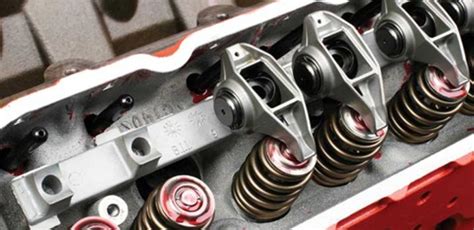How to Diagnose Common Rocker Arm Problems
Rocker arms, crucial components in valve train systems, translate the up-and-down motion of the camshaft into the opening and closing of engine valves. Problems with rocker arms can lead to decreased engine performance, poor fuel economy, and even catastrophic engine damage. This guide will help you diagnose common rocker arm issues, enabling you to address them promptly and effectively. Understanding these problems can save you time, money, and potential engine failure.
What are the Signs of a Bad Rocker Arm?
Before diving into specific diagnoses, let's look at the general symptoms indicating a problem with your rocker arms:
- Ticking or tapping noise: This is perhaps the most common sign. A persistent ticking or tapping sound, usually increasing with engine RPM, often points to a worn, loose, or damaged rocker arm. The sound might be faint or loud, depending on the severity of the issue.
- Rough running engine: A misfiring engine or one that runs roughly can indicate a problem with valve operation, often traced back to malfunctioning rocker arms.
- Decreased engine power: If your engine feels sluggish or lacks power, a rocker arm issue could be restricting valve operation, reducing engine efficiency.
- Burning oil: Damaged rocker arms can sometimes leak oil, leading to excessive oil consumption and potentially blue smoke from the exhaust.
- Check engine light: Though not always specific to rocker arms, a check engine light, especially accompanied by other symptoms, warrants investigation, including inspection of the valve train.
How to Inspect Rocker Arms: A Step-by-Step Guide
Diagnosing rocker arm problems requires a methodical approach. Here's a step-by-step guide:
- Safety First: Always disconnect the battery's negative terminal before working on any engine components. Allow the engine to cool completely before beginning any inspection.
- Visual Inspection: Remove the valve cover (refer to your vehicle's service manual for specific instructions). Carefully examine each rocker arm for obvious damage, such as cracks, bends, or excessive wear. Look for any signs of play or looseness.
- Checking for Proper Adjustment: Many rocker arms require adjustment to maintain the correct valve lash (the small gap between the valve stem and rocker arm). Consult your vehicle's repair manual for the correct adjustment procedure and specifications. Using incorrect lash can lead to premature wear and damage.
- Testing for Leaks: Check for any signs of oil leaks around the rocker arms or pushrods. Oil leaks could point to damaged seals or worn rocker arm components.
- Checking for Pushrod Issues: Pushrods, which transfer force from the camshaft to the rocker arms, can also be a source of problems. Inspect them for bends, cracks, or excessive wear. These often contribute to rocker arm issues.
What Causes Rocker Arm Problems?
Several factors can contribute to rocker arm failure:
- Wear and Tear: Normal wear and tear from continuous engine operation is a major cause. Over time, the rocker arms can wear down, leading to increased play and noise.
- Improper Adjustment: Incorrect valve lash adjustment can put excessive stress on the rocker arms, leading to premature wear and damage.
- Lack of Lubrication: Insufficient lubrication can cause increased friction and wear, leading to rapid rocker arm deterioration.
- Manufacturing Defects: In rare cases, rocker arms may have manufacturing defects that lead to early failure.
- Cam lobe failure: A worn cam lobe can damage the rocker arm it operates.
H2: How often should rocker arms be inspected?
The frequency of rocker arm inspections depends largely on the vehicle's make, model, and usage. Consult your vehicle's maintenance schedule; however, it’s generally advisable to inspect rocker arms during major engine maintenance or if you notice any symptoms like unusual noises or engine performance issues. Regular oil changes and proper lubrication are crucial for extending rocker arm lifespan.
H2: Can I drive with a bad rocker arm?
Driving with a bad rocker arm is not recommended. While you might be able to drive for a short distance, continued operation can lead to further damage, potentially causing significant engine problems. It's best to address the issue immediately.
H2: How much does it cost to replace a rocker arm?
The cost of replacing a rocker arm can vary depending on the vehicle, the number of rocker arms needing replacement, labor costs, and the cost of the parts themselves. It's advisable to get a quote from a qualified mechanic for an accurate estimate.
This comprehensive guide provides a solid foundation for diagnosing common rocker arm problems. Remember, consulting your vehicle's service manual is crucial for specific procedures and specifications. If you're unsure about any aspect of the diagnosis or repair, it's always best to seek the assistance of a qualified mechanic. Prevention through regular maintenance is always the best approach to avoiding costly repairs.

